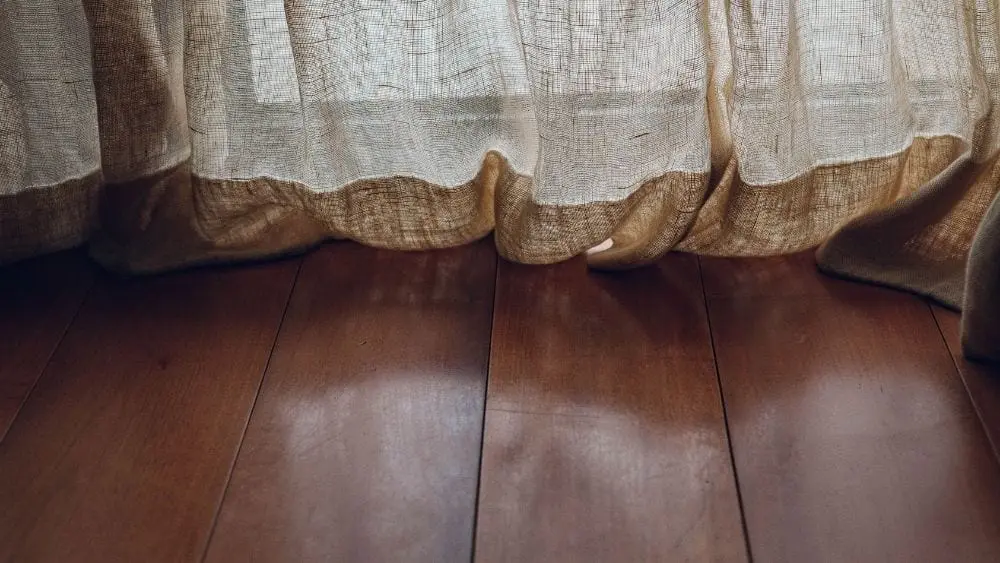
What is one of the most important home design elements that might be one of the most overlooked? Window treatments? Molding? Cabinet hardware? Guess again. It’s flooring.
Homeowners set foot on their hardwood floors, tiles, or carpets all day every day. The floor hardware literally sets the tone in your step and the warmth under your feet. Floors are multifaceted details that truly bring a home together. Floors are durable and sturdy, but yet provide coziness and texture. Whether is stylistic tiles or classic hardwood, floors tie a home’s style and décor together in harmony.
And whether you adore or loathe area rugs, homeowners must think about what lies beneath fuzzy and shaggy area rugs and carpeting. Is it hardwood, stone tiles, vinyl flooring, or something else? Hardwood floors are wildly popular in homes across the country and many homeowners are familiar with the pricey but pretty stone tiles. And, budget-conscious homeowners will wax poetics over vinyl sheet flooring. However, there’s another flooring option that might not be on your radar: bamboo.
Are you thinking of switching up your flooring options this year? If you’re seeking sultry and sustainable style in your space, look no further than bamboo flooring. Bamboo has gained some steam and style in recent years. Aside from timeless tile and hardwood options, bamboo is a running contender for long wearing flooring options for the home. It’s also proven to be sustainable and eco-friendly.
Will this shiny and sturdy flooring work for you? Most homeowners have seen bamboo before. It might conjure up images of oasis-like spas and laid-back living spaces. But, there’s so many more ways this flooring can be used. In fact, bamboo can be a fun and creative addition to any abode.
We did the research on why bamboo flooring is the option you’ve been searching for.
What is Bamboo Flooring?
Bamboo flooring made its debut in home design market in recent decades. It is a glossy-finished flooring option that’s often touted as a long-lasting and durable alternative to hardwood. While bamboo is commonly mistaken as another type of hardwood flooring, this material is actually created from grass.
Bamboo flooring is made by harvesting mature bamboo poles between three and six years old. The harvested bamboo is cut lengthwise into flat, vertical stalks and then pressed. The fibers run through a boiling process to remove components like starch and sugar. By removing these two ingredients, the product itself is less attractive to predators like termites that typically feed on the starch found in wood. The material moves onto another step in the process called carbonization, in which the bamboo is darkened. From there, the product dries and bamboo can be assembled into horizontal or vertical planks, or strand woven tiles.
Vertical and horizontal bamboo planks may seem similar on the surface but there are a few notable differences. Vertical bamboo typically has tight long lines, giving an overall seamless but consistent aesthetic. Horizontal planks tend to mimic the look of hardwood with grainy oak-like details. And, strand woven bamboo mixes visible stalk patterns together with rigorously pressing, creating a separate look.
Once finalized, bamboo can be a near visual duplicate for certain hardwoods such as pine or walnut, too. Bamboo texture is often hard and sturdy, making it a comparable option to hardwood floors.
Bamboo is Budget and Eco-Friendly
Costs for bamboo flooring will vary by a home’s location, size, and installation. The product typically runs from $4 to $9 per square foot. While bamboo isn’t a low-cost flooring option, it’s less expensive than hardwood prices.
Bamboo plants grow at a much faster rate than trees, and is often touted as a sustainable flooring option to many homeowners since it grows plentifully and swiftly.
Pros and Cons
Pros
Bamboo is a versatile flooring option. It’s a hard substance that’s durable and creates warmth underfoot. In fact, bamboo is nearly as hard and thick as oak or pine. It’s a quick renewing resource as new stalks will grow from the original bamboo plant.
Bamboo is also highly customizable – the fibers can be stained to match color schemes and trends. The aesthetic of bamboo in general is crisp, clean, and airy, which is perfect for homeowners who want to create a transformative and relaxing atmosphere with design and decor.
And, did we mention this flooring option is long-lasting? The material is highly durable with its hard texture, but it’s also not susceptible to termites which can erode other flooring such as wood. The hard texture also makes bamboo a superb choice for homes with pets and kids in tow, as the material can withstand wear and tear. As bamboo’s longevity is a main selling point for many folks, it’s also easy to clean. Simple cleaning products and mops will keep the floor in tip top shape for years to come.
Cons
Like any flooring option, bamboo is not without its drawbacks. Bamboo can only be stained in a few shades – as that’s all the fiber absorbs. And while this fiber is strong and sturdy, it’s still susceptible to scratches and water stains.
Another drawback is that not all bamboo flooring is created equal, as cheaper quality bamboo can be even more susceptible to damage (i.e. scratches) and might contain more chemical processes, making it less environmentally friendly. Since much of bamboo flooring products are manufactured overseas, the quality control between brands might not be the same. To avoid these pitfalls, we recommend researching bamboo products and checking for any sustainability reports on the manufacturing process and buying directly from reputable stores and sellers.
Bamboo Flooring and Your Home
Bamboo flooring is a lush, contemporary option for homeowners who want to refresh their space. The airy and tonal shades will provide a new, calming take on furnishings, paint, and decor. Bamboo’s of-the-moment crispness mixed with a classic, woody aesthetic, will make it a lasting flooring option for years to come.

Stephanie Valente is a Content Director and Editor in Brooklyn, NY. She’s previously held writing and social media positions at Barkbox, Men’s Journal, and currently works at a full-service advertising agency. She’s a self-confessed home and design enthusiast. Stephanie is an award-winning poet and fiction writer. When she’s offline, you can find her taking a yoga class, running, hanging out with her rescue dog Pepper. Find her on stephanievalente.com.
 Charming Vintage Bedroom Ideas That Look Anything But Dated
Charming Vintage Bedroom Ideas That Look Anything But Dated